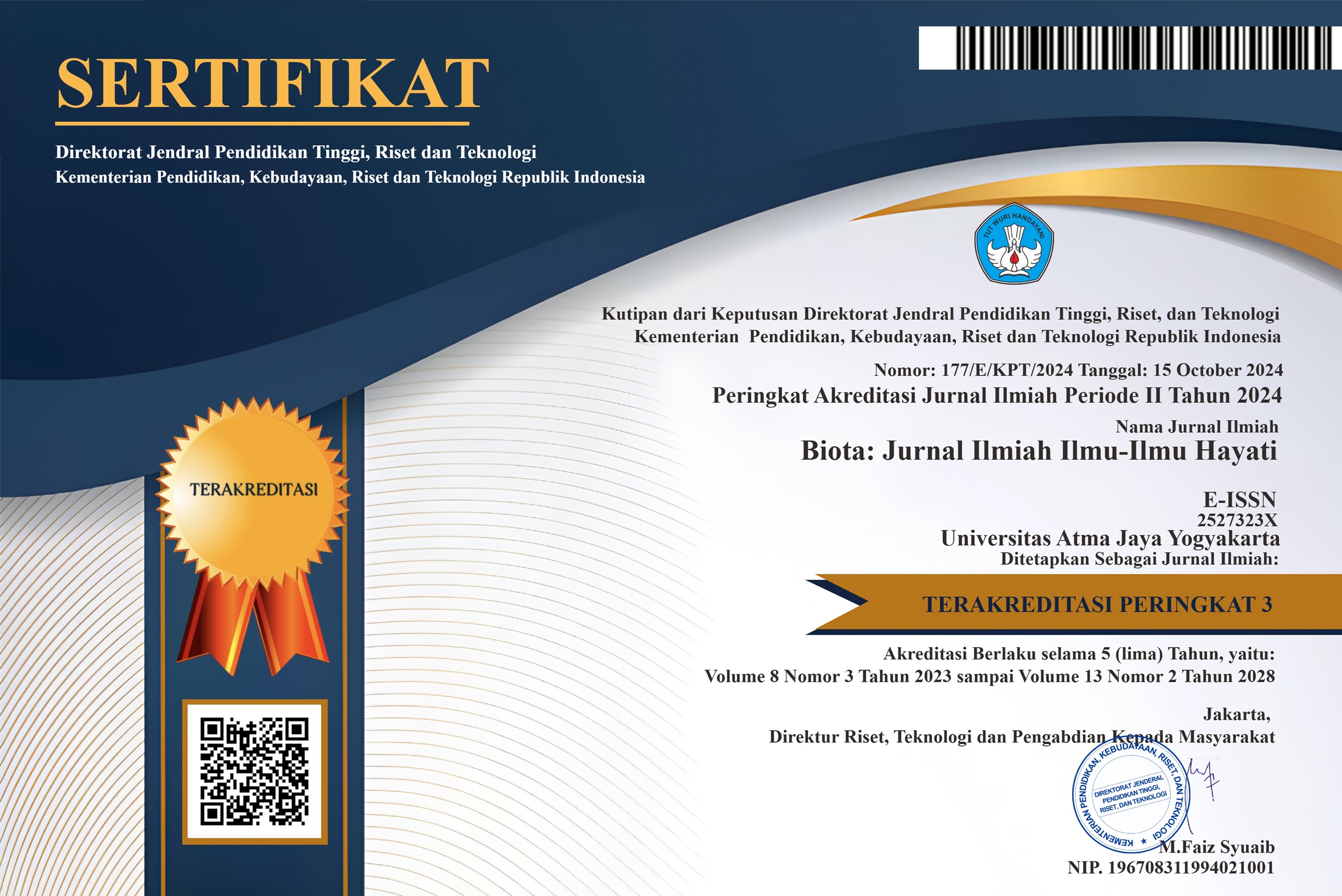Kualitas Minyak Kelapa Hasil Fermentasi Saccharomyces cereviceae
DOI:
https://doi.org/10.24002/biota.v10i3.2880Keywords:
coconut oil, Saccharomyces cereviceae, fermentationAbstract
One aspects of utilization of coconut fruit is its palm oil. Traditionally coconut oil was made by “klentik” method, which was time and energy consuming. The important thing in the production of coconut oil from its xanthan is the separation of protein from oil. One of separation methods is by creating low pH (acid) condition that is near to protein isoelectric point. This research objective was to determine the potency of Saccharomyces cereviceae, that has an optimum growth pH within the range of protein isoelectric point, to produce coconut oil. Three isolates of Saccharomyces were used, i.e. isolate A that was coming from alcohol industry (S. cereviceae strain Kyowa), isolate B that was natural type (isolated from fruits), and isolate C that was S. cereviceae in the form of powder (commercial isolate, Saf-instant). Coconut xanthan used in the research was prepared from old coconut fruits. Research stages including pure culture test of S. cereviceae, starter preparation, xanthan production, fermentation process, oil separation and heating. Quantitative and qualitative analyses were done for oil rendement, water content, free-fatty acid concentration, saponification number, iod number, and organoleptic test (color and aroma). The results showed that the quality of coconut oil produced by fermentation process was better than traditional way in term of rendement value, water content, saponification number, and iod number. This was supported also by organoleptic test that aroma and color of coconut oil from fermentation were more preferred by the panelists. Furthermore, the quality of oil produced by S. cereviceae fulfilled the standart stated by the Indonesian Department of Commerce (SII-1976) except for saponification number.
Downloads
Published
How to Cite
Issue
Section
License
Authors who publish with Biota : Jurnal Ilmiah Ilmu-Ilmu Hayati agree to the following terms:
- Authors retain copyright and grant the Biota : Jurnal Ilmiah Ilmu-Ilmu Hayati right of first publication. Licensed under a Creative Commons Attribution-NonCommercial 4.0 International License that allows others to share the work with an acknowledgment of the work's authorship and initial publication in this journal.
- Authors are able to enter into separate, additional contractual arrangements for the non-exclusive distribution of the journal's published version of the work (e.g., post it to an institutional repository or publish it in a book), with an acknowledgment of its initial publication in Biota : Jurnal Ilmiah Ilmu-Ilmu Hayati, and as long as Author is not used for commercial purposes.












